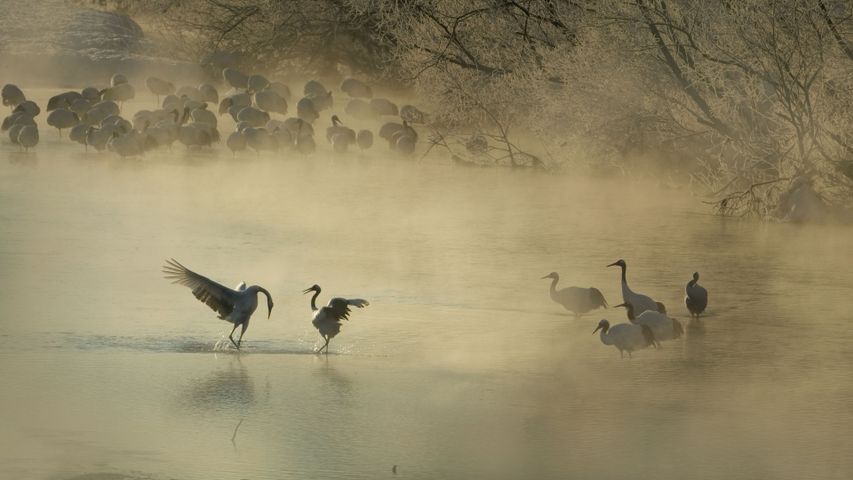Dancers on the site of a lele (altar) on Mount Maunaloa, Molokai, Hawaii
© Alvis Upitis/Getty Image
Sunrise at the birthplace of hula. AAPI Heritage Month & Lei Day
May 1 means different things in different parts of the world, but here in the middle of the Pacific Ocean, it means Lei Day, a statewide celebration of Hawaiian culture and the spirit of 'aloha,' that intangible sense of warmth, belonging, and connection that emanates from this isolated chain of volcanic islands. Lei Day was first celebrated in 1927 and made an official holiday in 1929. It also happens to fall on the first day of Asian American and Pacific Islander Heritage Month, which honors Americans of Asian, Melanesian, Micronesian, and Polynesian heritage. May is the month the first Japanese immigrants arrived in the US in 1843, and the month the transcontinental railroad was completed in 1869 by, mostly, Chinese immigrants.
Lei Day is celebrated on all the Hawaiian Islands with parades, pageants, music, dancing, and food. But at the heart of the party are leis, the garlands worn around the neck that are made with leaves, shells, and seeds, but primarily with flower blossoms. Leis are considered symbols of aloha.
Hula is also an important part of celebrating Lei Day. More than the quaint entertainment many of us have come to know, hula is a complex and ancient art form of dance and chants. Without a written language, Hawaiians used hula to record their history and culture. In this photo, a hula teacher, known as a kumu hula, leads a group of dancers against the backdrop of the rising sun, on the site of an ancient altar on the island of Molokai. It's said that hula was created by the goddess Laka on this very spot...probably on a morning that looked a lot like this one.
Related Images
Bing Today Images




 Red-crowned crane bowing to his mate in Hokkaido, Japan
Red-crowned crane bowing to his mate in Hokkaido, Japan
 Construction workers on scaffolding
Construction workers on scaffolding
 Pelicans at Sonny Bono Salton Sea National Wildlife Refuge, California
Pelicans at Sonny Bono Salton Sea National Wildlife Refuge, California
 Wildebeests in the Maasai Mara National Reserve, Kenya
Wildebeests in the Maasai Mara National Reserve, Kenya
 Moai statues on Easter Island, Chile
Moai statues on Easter Island, Chile
 Oktoberfest visitors in Munich, Germany
Oktoberfest visitors in Munich, Germany
 Masai giraffe in Maasai Mara, Kenya
Masai giraffe in Maasai Mara, Kenya
 Sailors on the amphibious assault ship USS Iwo Jima on New York's Hudson River during Veterans Week, 2016
Sailors on the amphibious assault ship USS Iwo Jima on New York's Hudson River during Veterans Week, 2016


